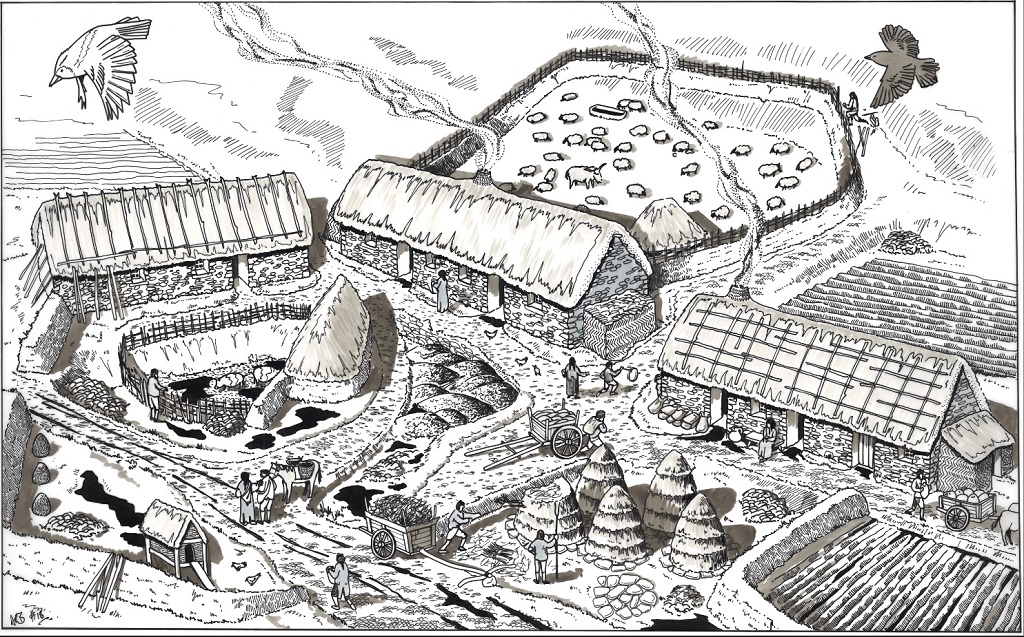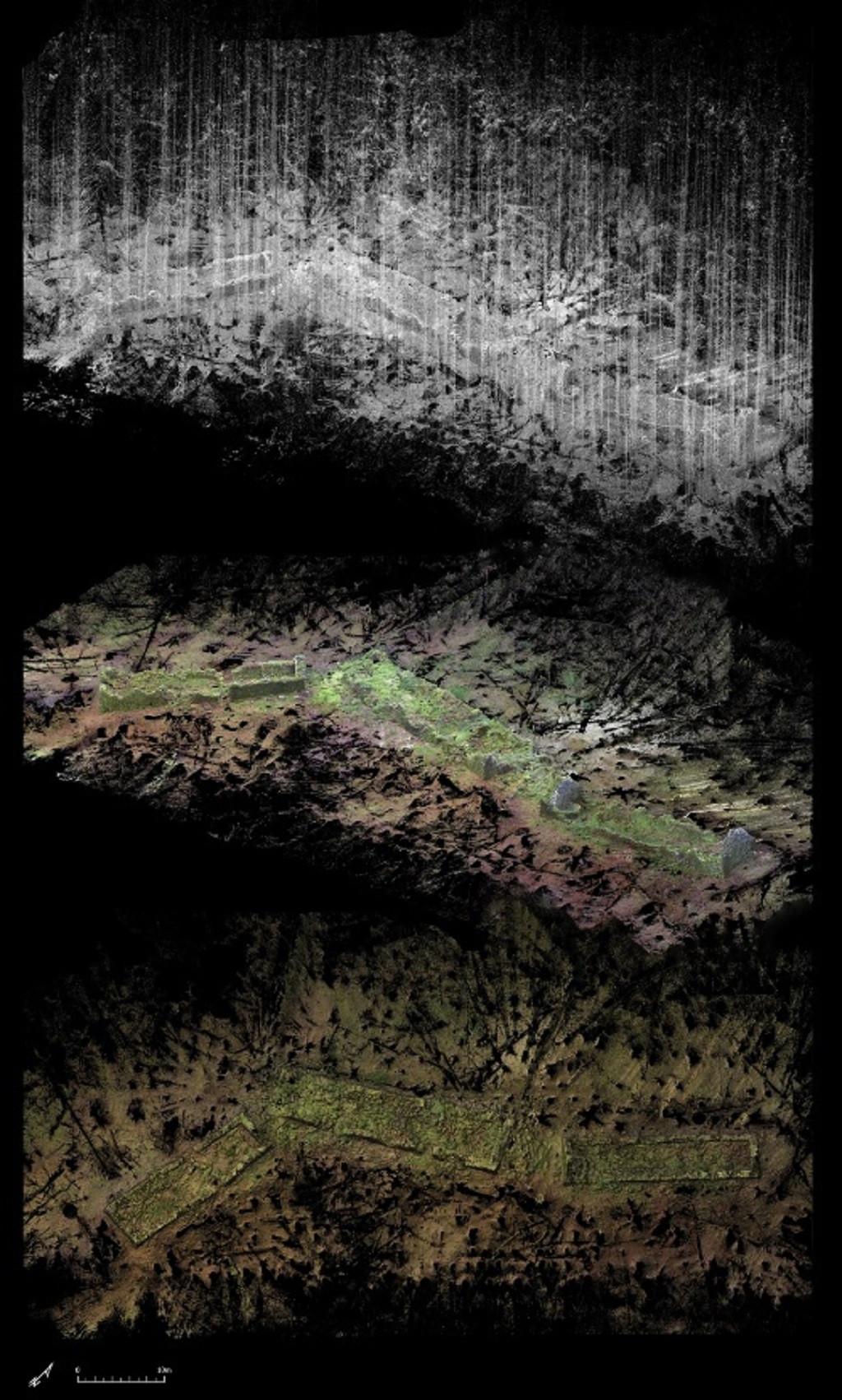
Ruined Scots farmstead may have been a distillery
Forestry and Land Scotland has digitally documented two ruined farmsteads near Loch Ard, in advance of harvesting – and investigated their possible use as a hidden distillery.
Until recently the remains of the 18th century farmsteads of the Wee Bruach Caoruinn and the Big Bruach Caoruinn – including their large corn drying kilns – had lain hidden in Loch Ard forest.
They were recorded by laser scanning before careful felling operations earlier this year removed the trees growing around them.
FLS archaeologist, Matt Ritchie, who was responsible for investigating and recording the sites, said: ‘The farmsteads of Bruach Caoruinn were flagged up by the local history society as being of interest – the surviving narrow buildings are unusually long, and are associated with two large corn drying kilns.
‘Set in a relatively inaccessible area yet close to Glasgow, in close proximity to water and with strong associations with a number of the important families in the district, it is possible that the site was a hidden distillery, producing illicit whisky in the early 19th century.’

An artist’s impression of Wee Bruach
In the late 18th and early 19th centuries, illicit distilling was rife in the Highlands of Scotland. The government had wanted to extend its control over whisky production and the Excise Act of 1788 banned the use of small stills that made less than 100 gallons (450 litres) at a time.
Excise officers were given powers to search for illegal whisky stills and to confiscate the equipment and whisky they found. Highland whisky production went underground and stills were hidden in remote places.
Commercial legal whisky was of poor quality due to the high rate of tax imposed on the malted grain used to make whisky. To cut costs, the large lowland distilleries began to use unmalted raw grain. This produced an inferior drink called corn spirits.
The illicit stills paid no tax and continued to use good malted grain, and so, once it had been smuggled to lowland markets, it fetched a higher price than the whisky made by the licensed whisky distilleries. Customers for the illicit whisky were not just farmers and workers but the rich, even the judges and lawyers whose job it was to stop the trade.
Matt continued: ‘You can malt grain in a corn-drying kiln, and the long narrow buildings would have been perfect for fermenting and distilling whisky. I wonder if there had been illicit whisky being made at Bruach Caoruinn on an almost industrial scale. There is no surviving evidence, bar historical whispers. But is this really surprising?
‘It was important both to record the surviving ruins and plan how we were going to fell the trees without damaging the remains. We used state-of-the-art laser scanning techniques to build a 3D digital model for digital documentation; helping us look at any number of views of the buildings.

A 3D digital mode
‘These views, together with the artists’ impressions that they inspired, have helped revealing the special character and atmosphere of the once-afforested ruins and how they may have looked in times past.’
Known as far back as 1540, the land is thought to have had an association with hunting, with iron-making, and with livestock husbandry – goats, horses, cattle and, in the late 18th century, sheep. The farms were abandoned in the 1840s and, by the 1860s, had fallen into ruin. However, the narrow roofless buildings have survived surprisingly well, having been afforded some protection by the forest that used to surround them.
Investigation of the structures, including the archaeological measured survey and historical archival research, was carried out with the assistance of the Scottish Vernacular Buildings Working Group, AOC Archaeology, Alan Braby and Mairi Stewart.
Forestry and Land Scotland manages forests and land owned by Scottish Minsters in a way that supports and enables economically sustainable forestry; conserves and enhances the environment; and delivers benefits for people and nature.
TAGS

